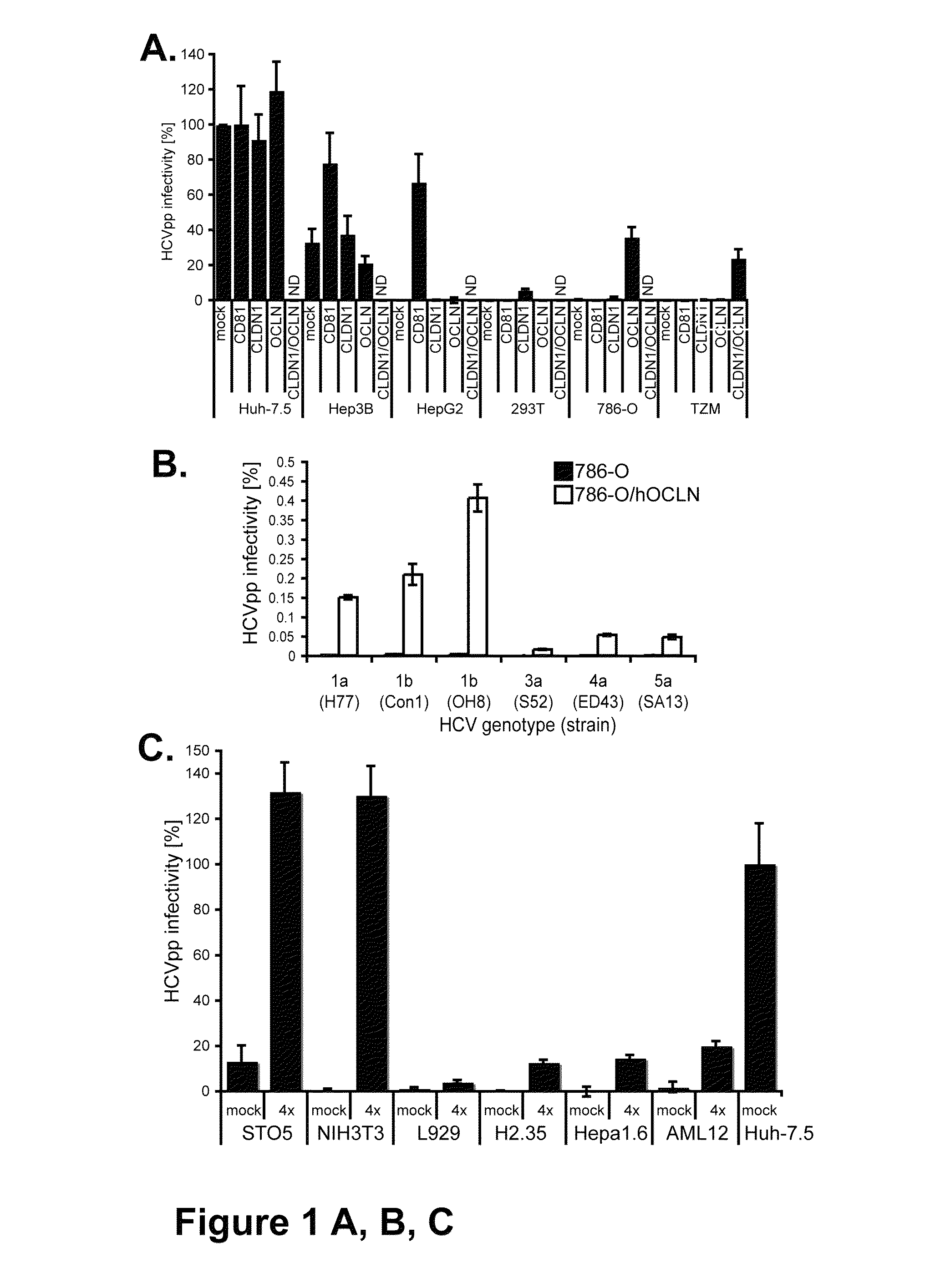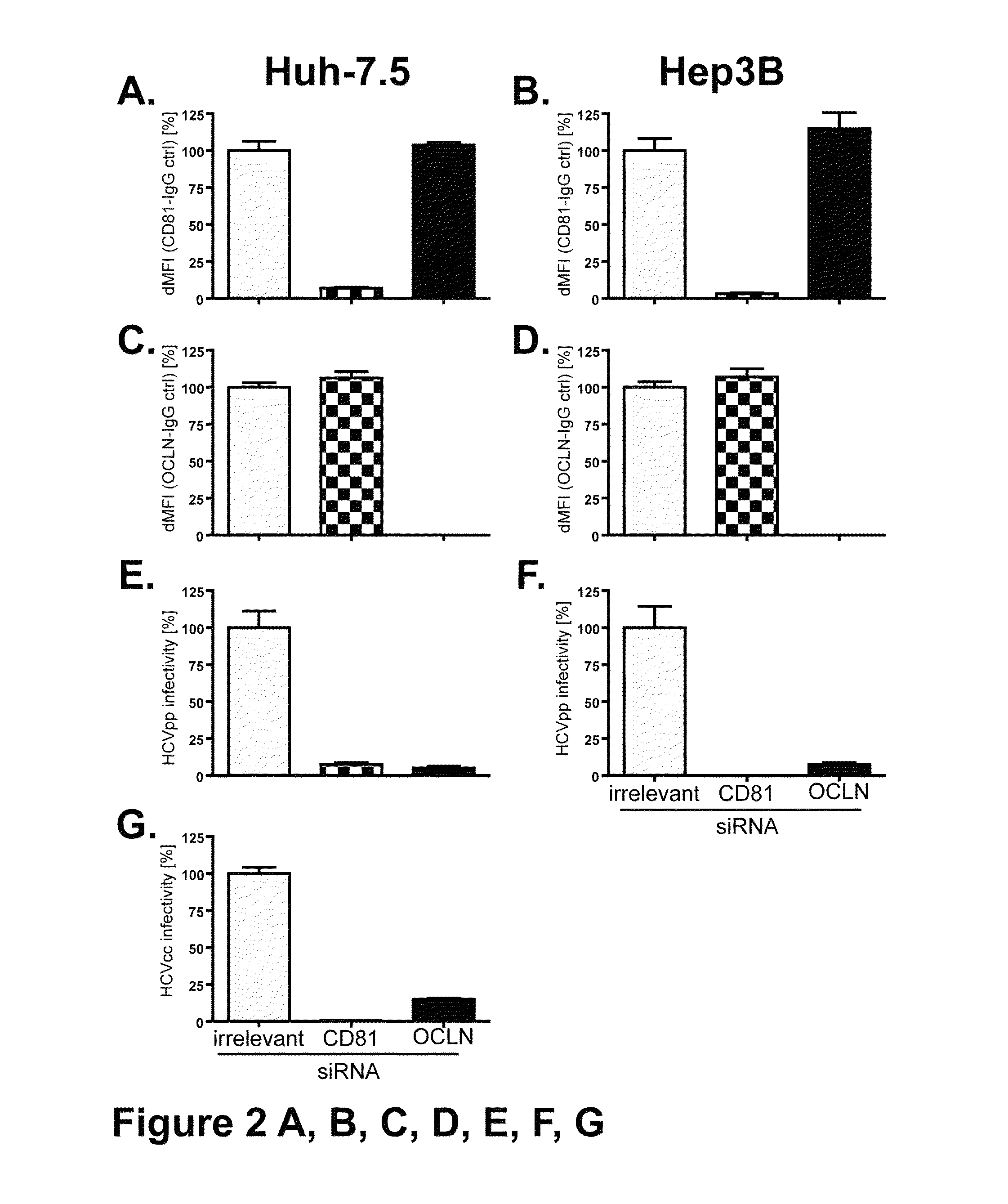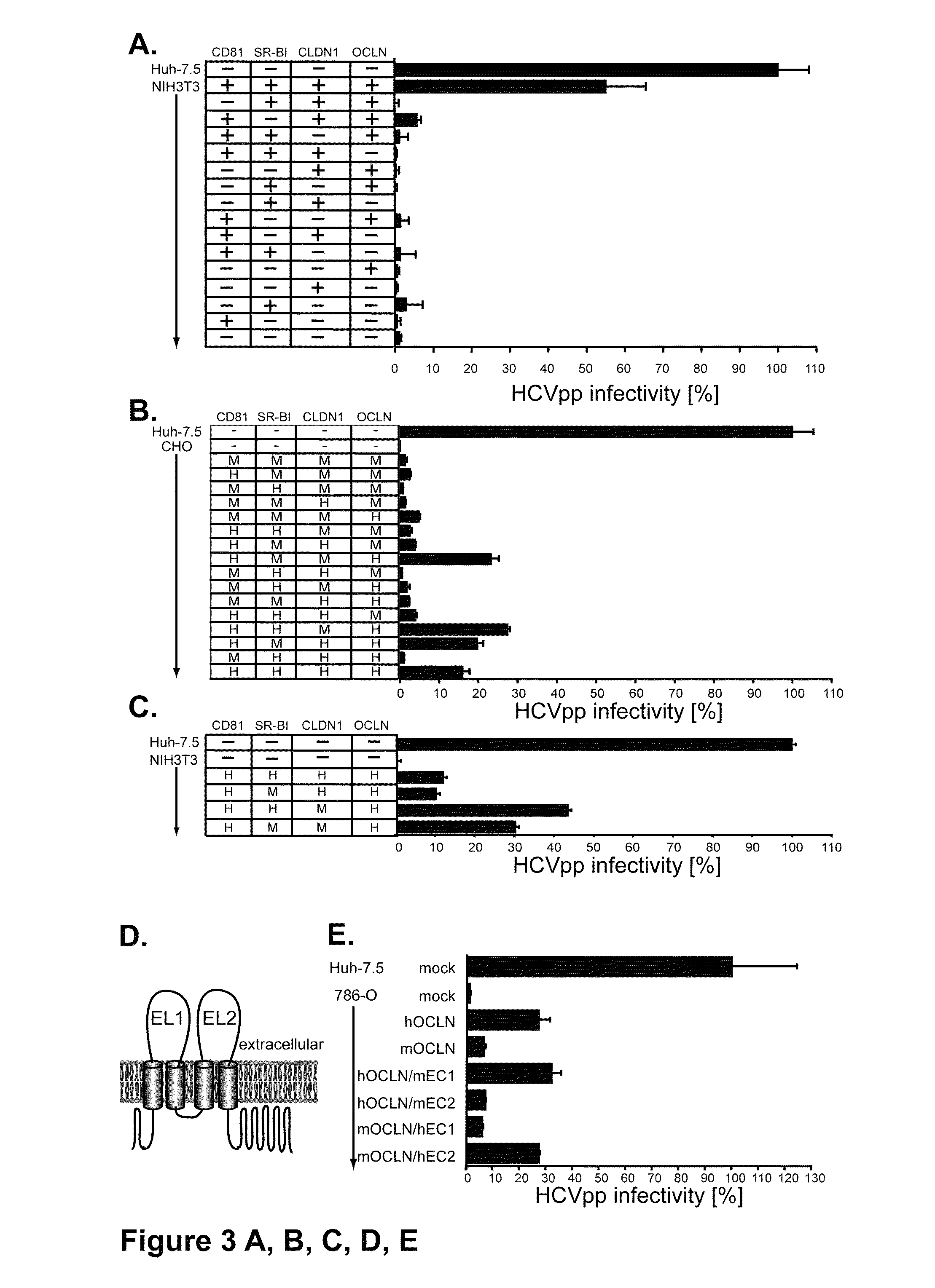HCV entry factor, Occludin
a technology of entry factor and hcv, which is applied in the field of hcv entry factor, occludin, can solve the problems of hampered development of much needed specific antiviral therapies and effective vaccines, and achieve the effects of enhancing nih3t3 hcvpp infection, enhancing vsvgpp infectivity, and being more infectabl
- Summary
- Abstract
- Description
- Claims
- Application Information
AI Technical Summary
Benefits of technology
Problems solved by technology
Method used
Image
Examples
example 1
Supplemental Material and Methods
Cells
[0059]293T, 786-O, AML12, H2.35, Hep3B, Hepa1.6, HepG2, Huh-7.5, L929, NIH3T3, STO6 and TZM cells were maintained in DMEM with 10% fetal bovine serum (FBS). CHO cells were maintained in DMEM / F-12 with 10% FBS. HepG2 were grown on collagen coated plastic.
Antibodies and Reagents
[0060]A mouse monoclonal antibody against OCLN (clone OC-3F10) was purchased from Zymed Laboratories (San Francisco, Calif.). Mouse anti-CD81 1.3.3.22 was obtained from Santa Cruz Biotechnology (Santa Cruz, Calif.). Purified mouse IgG1 was from BD Pharmingen (Franklin Lakes, N.J.). The mouse anti-NS5A antibody 9E10 (15) and human anti-SR-BI antibody C167 (5) have previously been described. Alexa Fluor488 conjugated anti-mouse IgG secondary antibodies were obtained from Invitrogen (Carlsbad, Calif.) and R-phyco-erythrin (PE) goat anti-mouse IgG secondary antibodies were obtained from Jackson ImmunoResearch Laboratories, Inc. (West Grove, Pa.). Anti human IgG4 antibodies and ...
PUM
| Property | Measurement | Unit |
|---|---|---|
| pore size | aaaaa | aaaaa |
| paracellular permeability | aaaaa | aaaaa |
| cell polarity | aaaaa | aaaaa |
Abstract
Description
Claims
Application Information
 Login to View More
Login to View More - R&D
- Intellectual Property
- Life Sciences
- Materials
- Tech Scout
- Unparalleled Data Quality
- Higher Quality Content
- 60% Fewer Hallucinations
Browse by: Latest US Patents, China's latest patents, Technical Efficacy Thesaurus, Application Domain, Technology Topic, Popular Technical Reports.
© 2025 PatSnap. All rights reserved.Legal|Privacy policy|Modern Slavery Act Transparency Statement|Sitemap|About US| Contact US: help@patsnap.com



